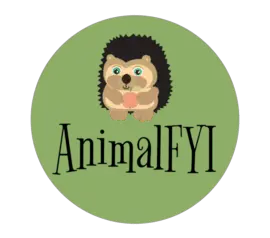The Genetic Factors Behind Feline Size
With more than 500 cat breeds worldwide, feline size can vary greatly. A tabby might be as small as 8 pounds or as big as 25 pounds depending on the breed and genetic makeup of the cat. With such a broad range of sizes, understanding a little more about genetics can help to explain why cats come in so many shapes and sizes.
Factors Influencing Cat Size
There are several factors that go into determining how large a particular cat will grow to be: genetic background, diet and nutrition, health issues, exercise levels, age when fully grown – all these things influence how big a kitty will become. While much is unknown about exactly which genes contribute what traits in cats — there’s evidence that certain breeds have been selectively bred over centuries for specific traits like size — making them bigger or smaller than average.
The Relationship Between Diet and Cat Size
Diet plays an important role in unlocking your pet’s full growth potential based on their genetic profile. Most vets recommend kittens receive high-quality food with plenty of protein early on to ensure healthy development throughout their life span—which can also affect their final size when they reach adulthood after one year old. Older cats should avoid eating too much fatty foods which could result in obesity if not controlled properly; this could lead to shorter lifespans due to related health conditions like cardiovascular diseases or diabetes type II for example.
Health Concerns That Come With Bigger Cats
When it comes to larger cats specifically though there may be additional concerns you should take into account before bringing home one of these furry giants.
- Some bigger breeds have higher risks for joint problems or heart conditions due both hereditary predisposition and extra weight putting strain on bones & organs alike.
These issues need monitoring regularly by professional veterinarians who can advise owners accordingly.
Common Breeds That Are Bigger Than Average
- Maine Coons (the largest domestic breed) usually weigh between 13–18 lbs at maturity but some specimens have reached up 25lbs!
- Ragdolls often reach 16–20 lbs however those living indoors tend toward smaller weights because physical activity is limited.
.
< h 2 > The Advantages Of Owning A Big Cat h 2 >< p class =" int ext - paragraph " >Owning a bigger breed means having an impressive companion around the house ! Some advantages include: p >< ul class =" int ext - list ">“Heavier body mass provides added warmth during winter months provided they stay active enough.” < li />>”Bigger appetite which helps keep them energized longer .” < li />>”Stronger voice allows them express themselves better .” < li />> ul >< br />
Maintaining A Big Cat’s Diet And Health
Feeding large cats correctly requires appropriate amounts of essential nutrients without going overboard on calories given their slower metabolism rate compared with smaller kitties . This means sticking mostly to quality proteins balanced out with carbohydrates plus minimal fat content . You must monitor portion sizes carefully according to each individual animal’s needs so they don’t gain excess weight from overeating ! Also make sure you provide access clean drinking water daily since dehydration is especially dangerous for obese petscomparedwithleanerones .. Furthermore regular vet checkups are recommended ensure proper maintenance any existing medical conditions such arthritis hypertension etc … P >< BR / >
< H 2 > Exercising And Playtime For Bigger Cats H 2 >< P CLASS = “ INTEXT - PARAGRAPH ” Larger breeds require lots playtime fun activities stimulate maintain healthy lifestyles prevent boredom depression Poorly exercised inactive arthritic felines experience pain discomfort aggravated joints muscles Even indoor only giants benefit stimulating interactive toys encourage exploration climbing jumping behavior Encourage swimming simple aquatic movements providing shallow vessels filled lukewarm water part routine Without sufficient activity Dry diets typically create excessive energy reserves build up leading unbalanced metabolisms other worries Make sure enjoy outdoor special occasions supervised areas securely closed enclosed patios gardens balconies allow fresh air exposure natural sunlight Handle differently than lightweights heavier bodies require more thoughtful approach lifts hugging motions reduce back strain injuries.. All told exercise fundamental element long term wellbeing mammoth mousers just like anyone else! -->
##### END ####

